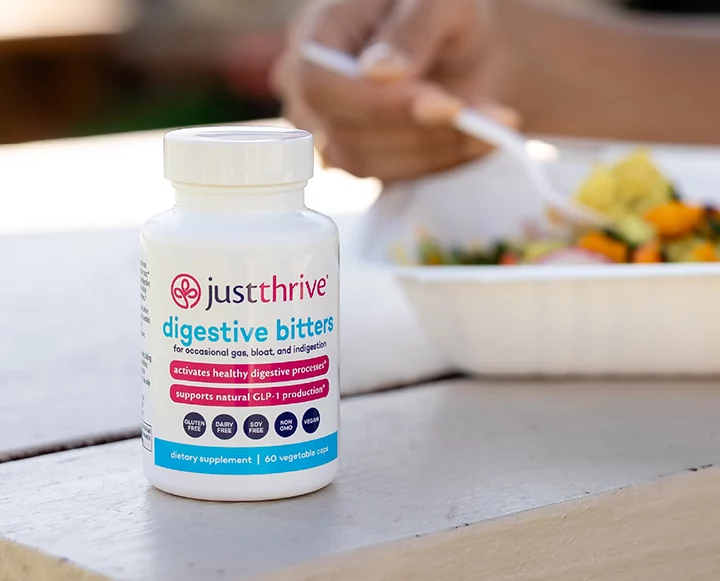A CARROT IS A CARROT until you top it with a lemon-drenched miso bagna cauda – then it’s pure magic. Same goes for a strawberry and it’s mystical transformation via this fennel and salt sofrito.
L.A.’s Michelin-starred Chef Jeremy Fox, also known as the veggie whisperer, is a master of this kind of veggie-based magic and this city loves him for it. From the acclaimed Rustic Canyon to the fairly new Esters Wine Shop in Santa Monica, Fox’s ingredient-first food philosophy comes to life in the most crave-worthy way.
In his first cookbook, On Vegetables, you’ll find all the sauces, condiments and recipes necessary to make the most ordinary fruits and veggies sing. We picked a few incredible condiments from Fox’s section on his own personal larder and we’re thrilled at the thought of readers making them. Try the recipes below and enter to win your own copy of On Vegetables for yourself…
Building a larder from scratch may be the most important thing you ever do in your kitchen.
When I started working at Manresa, the kitchen team was already fairly experienced. Chef Kinch would let us work on a lot of personal cooking projects, hoping that our experiments might eventually wind up on the menu. I was ordering ingredients just for my own experiments, messing around with them, and trying to accomplish something new and different. But really, I was just trying to impress Kinch. Whenever I did manage to impress him, my heart bounced with pride.
So when I took over Rustic Canyon I wanted to bring that same process to my own kitchen. It didn’t take long, though, before I realized that everything was off track. Nobody had the necessary experience. Cooks were just throwing ingredients together and seeing what would stick. It was, basically, young kids working on elaborate, conceptualized dishes and directing their focus on the wrong things. So I scrapped it. We got back to basics. We started making sauerkraut, our own pickles and mustard. Then we started making cheese, and suddenly we had whey lying around. What could we do with whey?
The team wasn’t ready to be creative yet. Instead, I was teaching them how to put together building blocks, and cultivate a repertoire so that the next time they got the opportunity to be creative, they would be ready. There’s just no substitute for knowing how to make a really good mayo. It’s not about learning a recipe — it’s about learning how to taste. Making good mayonnaise requires you to understand the balance of fat, salt, lemon, garlic, and mustard. You will identify flavors better. You will acquire context.
Ultimately, the most basic goal in building your larder is to turn your kitchen into a grocery store. Rather than just grabbing a package of fresh ricotta from the supermarket, you can now use ricotta that you’ve made yourself. Does it taste better than the finest ricotta money can buy? Perhaps. But it is better anyway, because you made it. There is now narrative and personal appreciation built into your food. As it turns out, work tastes good sometimes.
In the end, creating your larder is not about some theoretical idea of a “better” meal, but to make the hours you spend in the kitchen more efficient rather than less. When you have the luxury of free time — say on a lazy Sunday afternoon — you can work on some of the slower, more meditative cooking processes. When you have the freedom to spend your energy on things like Calabrian Chili Butter, Shallot Confit, and Labneh, it will pay you back on all those nights when you’re just hungry, and too damned tired to build slow, meticulous flavor. You don’t need to chop raw garlic when you already have a container of the stuff confited. A quick weeknight dinner tastes a whole lot better when you can pull homemade Preserved Lemons and Miso Bagna Caudaright out of the refrigerator. You invest in flavor when you have the time so that you can reap the benefits when you do not.
MISO BAGNA CAUDA
Makes 2 ½ cups
Ingredients:
2 lemons, seeded and diced
2 cups extra-virgin olive oil
a scant 5.3 oz miso paste (I prefer red miso but any type will do)
about 3 heads garlic, peeled, germ removed and finely grated
½ tsp chili flakes
kosher salt, as needed
Directions:
Fill a medium saucepot with about 2 inches water (enough water so it doesn’t evaporate out during cooking, but not so much that it touches the bowl that will be set over it). Bring the water to a simmer.
Place the diced, seeded lemons in a metal bowl (that will sit snugly over the saucepot) and add the olive oil, miso paste, garlic, and chili flakes. Stir to combine, cover the bowl with plastic wrap (clingfilm), and set it over the pot of gently simmering water.
Allow the mixture to cook in your double boiler for about 45 minutes — the result will be a combined but broken sauce.
Remove from the heat and let the sauce come to room temperature. Taste it for salt, but it should be plenty salty from the miso paste. Transfer to a jar, cover and refrigerate for at least 1 week (and up to 2 months if the solids stay fully covered by oil). Serve at room temperature.
Adapted from ON VEGETABLES: MODERN RECIPES FOR THE HOME KITCHEN by Jeremy Fox.
CLASSIC BASIL PESTO
Makes 1 cup
Ingredients:
1 oz pine nuts, toasted until deep golden brown
½ oz grated garlic (germ removed)
½ tsp kosher salt
2 cups packed basil leaves (stems reserved for other things, such as tying in a sachet and using it to flavor sauce or soup)
1 tsp kosher salt, plus more as needed
½ cup extra-virgin olive oil
Directions:
Mortar-and-pestle method:
Grind the pine nuts, garlic and salt. Once you have the beginnings of a paste, add the basil. After working it for a minute or so, slowly drizzle in the olive oil and continue pounding until you have a rough, textured sauce.
Use right away or refrigerate for up to 3 days. If storing, cover with a layer of olive oil to prevent discoloration.
Food-processor method:
Add all of the ingredients except the olive oil to the food processor and pulse until the ingredients have begun to break down.
Slowly drizzle in the olive oil, continuing to pulse until you have a rough, textured sauce. Be careful not to over-purée into a fine paste.
Pesto is best when fresh, but will hold in the fridge in an airtight container for 3 days if necessary.
Adapted from ON VEGETABLES: MODERN RECIPES FOR THE HOME KITCHEN by Jeremy Fox.
STRAWBERRY SOFRITO
Makes 4 cups
Ingredients:
8 oz finely diced fennel bulb
2 cups finely diced white onions
1 cup raw pine nuts
1 cup extra-virgin olive oil
1 tsp kosher salt, plus more as needed
2 lbs strawberries
cracked black pepper
Directions:
In a wide, heavy-bottomed pot, combine the fennel, onion, pine nuts, olive oil and salt and cook over low heat, stirring occasionally, until everything has a nice golden-brown color, 2 to 3 hours. (The goal here is to slowly caramelize the fennel and onion evenly, while also slow-toasting the pine nuts. You should really take your time here and not rush it.)
Meanwhile, wash the strawberries. I like to submerge them in a bowl of water, agitating them with my hands and letting all of the grime fall to the bottom.
Gently lift the strawberries from the water with your hands and let them dry on tea towels. Once dry, hull the berries. Place them in a bowl and give them a rough crush with your hands, like an Italian grandmother making tomato sauce.
Add the strawberries and any resulting juices to the pot of caramelized fennel, onion and pine nuts. Continue to cook over low heat until the sofrito is dark, jammy and savory, another 3 hours.
Season with additional salt if needed, then season to taste with pepper. (I like this with a strong dose of black pepper.)
Let cool to room temperature. Store airtight in the refrigerator for up to 1 week.
NOTES: Set aside around 6 hours to cook this sofrito.
Adapted from ON VEGETABLES: MODERN RECIPES FOR THE HOME KITCHEN by Jeremy Fox.












